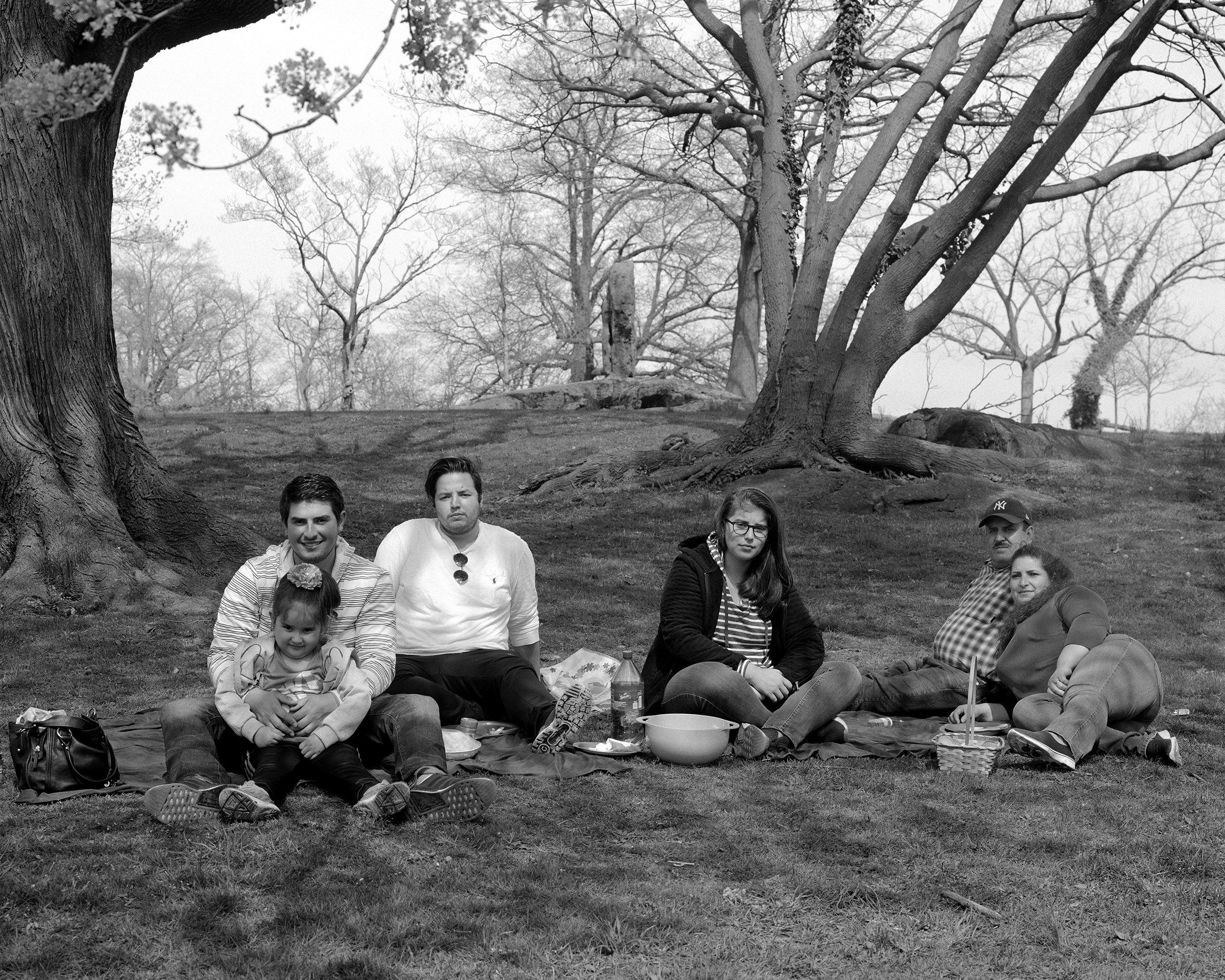In conversation with Sara Urbaez
Edited for length and clarity
Edited for length and clarity
Luis Manuel Diaz:
Portfolio Overview

This body of work is a collection of what I thought were two separate projects, but have recently come to realize that they need each other in order further contextualize my lived experience. The images were created in the US, where I immigrated to, and of Mexico, where I immigrated from. These works investigate what happens post-migration, what happens to a family when they're reunited in the US, how does one adapt to a new landscape and way of life? What happens to the home you leave behind, who is left behind, who takes care of the landscape that housed previous generations? The images attempt to provide two perspectives on what immigration is and what are causes and effects, that create both of those landscapes.
Beautiful. I love that. I was first introduced to your work at the Bronx Documentary Center, the imagery shot in your hometown of Mexico, and your family’s images in the United States — they were both connected, but there were also remarkable differences visually. I think it would be interesting to showcase a mix of both.
My use of black and white and color photographs came about wanting to challenge the master narrative surrounding immigration and how we view images in general. When we think about memory, traditionally it's been shown as black and white and super moody. But for me, memory — especially memory of home — is vibrant. That's why my images of Mexico are so vibrant and super specific. They're specific images about locations, objects, textures, smells, and of course my grandparents.
All of my images in the US are intentionally black and white. I was initially interested in the history of photography and how images became a colonist tool to promote white supremacy. I wanted to create images that would counter those narratives that had been created for us with the same tools — a camera and black and white film. But eventually it started speaking to this different view about both halves of these spaces, how the black and white images were more real but harsher, and the color images were softer but more aesthetically pleasing.
In my opinion, when people immigrate and leave for a long time, when we think of home, we tend to aestheticize home — we long for this beautiful place. We seem to forget why we left, but we remember everything that's left behind, the more beautiful things about the space. But once you're back there and you have the privilege to go back to these spaces, it takes time for you to realize that it's no longer a place for you. Well, at least personally, it wasn't a place where I could thrive, socially or economically.
All of my images in the US are intentionally black and white. I was initially interested in the history of photography and how images became a colonist tool to promote white supremacy. I wanted to create images that would counter those narratives that had been created for us with the same tools — a camera and black and white film. But eventually it started speaking to this different view about both halves of these spaces, how the black and white images were more real but harsher, and the color images were softer but more aesthetically pleasing.
In my opinion, when people immigrate and leave for a long time, when we think of home, we tend to aestheticize home — we long for this beautiful place. We seem to forget why we left, but we remember everything that's left behind, the more beautiful things about the space. But once you're back there and you have the privilege to go back to these spaces, it takes time for you to realize that it's no longer a place for you. Well, at least personally, it wasn't a place where I could thrive, socially or economically.
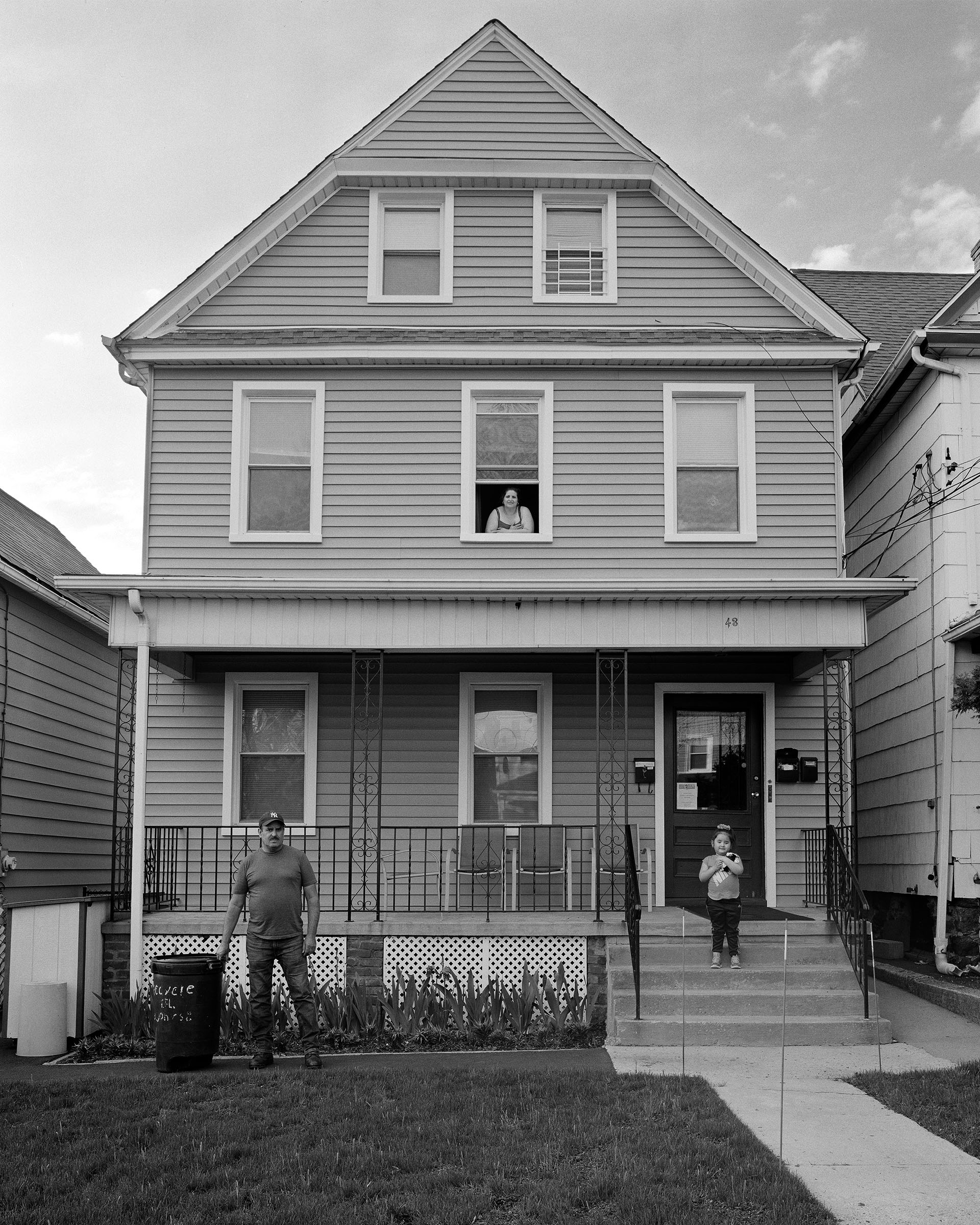
My family came from the Dominican Republic, but anytime I'm back there, or remember being there, I think of all the colors of vibrancy, the noises and longing for that and what a contrast that is to America in a lot of ways. Tell me about your background. Where is your family from? And your immigration story.
My family history — specifically immigration — started with my maternal grandfather. He was part of the Bracero program — he came to the US in the 50s and worked in the fields picking grapes, apples, potatoes. He did everything, a lot of field labor. The Bracero program was initiated in the 1940s by the United States, where they could hire seasonal Mexican workers for cheap, manual labor. It was through the Bracero program that there was this first iteration of the American dream for my family.
That first American dream was to come to the US to work, save money, go back home, and buy property. And that was what my grandfather did. He bought a huge piece of land where he raised cows, farmed and re-imagined it for future generations. But later on, this American dream changed. The next generation — my father and mother's generation — they thought they could work the land in Mexico in these larger pieces of fertile land, but because of NAFTA, farm work was no longer profitable — it was back to trying to make life in America on their own.
Ever since my father was a teenager in the early 80s, he immigrated to the US and worked for years as a farm worker, gardener, and construction worker. As an undocumented immigrant he wasnt able visit home much, but would try to visit once a year. Later on he was able to become a “legal” resident through Reagan’s amnesty in 1986 — one of the few amnesties that the States has done.
I was born and raised in Mexico and all through my childhood, my father would come and go. I would only see him for a month during the holidays, and that would be it. And then the occasional phone calls when he would get out of work and we would get to talk to him for a few minutes. That was our life. I didn't realize how horrible it was until I got older. Growing up, I thought that was the norm. I thought everyone experienced this because everyone in our community went through the same thing. All the fathers would be away and we would have all these mother figures taking care of all the kids.
That was our life up until I was nine years old. It took my father years and thousands of dollars in order for us to reunite. (People need to understand that it's extremely difficult and expensive to get a greencard, and not only that but it takes years before all paperwork is approved and you can reunite with your family.) In 2006, we immigrated to the US and for the first time in our life we could enjoy each other's presence without a ticking clock in your head. After immigrating and reuniting, survival mode was activated. That's when we're trying to adapt to this new environment and assimilation hits — you'd go through this out-of-body experience, trying to find people you can relate to. But you can’t relate to anyone, so you start changing to fit in and all these existential issues that immigrants go through while trying to adapt to this new environment.
That first American dream was to come to the US to work, save money, go back home, and buy property. And that was what my grandfather did. He bought a huge piece of land where he raised cows, farmed and re-imagined it for future generations. But later on, this American dream changed. The next generation — my father and mother's generation — they thought they could work the land in Mexico in these larger pieces of fertile land, but because of NAFTA, farm work was no longer profitable — it was back to trying to make life in America on their own.
Ever since my father was a teenager in the early 80s, he immigrated to the US and worked for years as a farm worker, gardener, and construction worker. As an undocumented immigrant he wasnt able visit home much, but would try to visit once a year. Later on he was able to become a “legal” resident through Reagan’s amnesty in 1986 — one of the few amnesties that the States has done.
I was born and raised in Mexico and all through my childhood, my father would come and go. I would only see him for a month during the holidays, and that would be it. And then the occasional phone calls when he would get out of work and we would get to talk to him for a few minutes. That was our life. I didn't realize how horrible it was until I got older. Growing up, I thought that was the norm. I thought everyone experienced this because everyone in our community went through the same thing. All the fathers would be away and we would have all these mother figures taking care of all the kids.
That was our life up until I was nine years old. It took my father years and thousands of dollars in order for us to reunite. (People need to understand that it's extremely difficult and expensive to get a greencard, and not only that but it takes years before all paperwork is approved and you can reunite with your family.) In 2006, we immigrated to the US and for the first time in our life we could enjoy each other's presence without a ticking clock in your head. After immigrating and reuniting, survival mode was activated. That's when we're trying to adapt to this new environment and assimilation hits — you'd go through this out-of-body experience, trying to find people you can relate to. But you can’t relate to anyone, so you start changing to fit in and all these existential issues that immigrants go through while trying to adapt to this new environment.


Thank you so much for sharing that with me, because it is important for people to understand the process and nuances that happen with immigration. And what happens with family history and assimilation is a huge part of our lives as immigrants. It's something that I'm starting to unravel myself because I was born and raised here, it's not something I ever even questioned. It was just like, “you have to assimilate, this is what you do.” Did you see any images when you were growing up that you felt reflected your experience?
Coming from a place like Mexico where I’m on the lighter side of a mestizo, I had the privilege of seeing a version of myself represented — TV was filled with the light skin mestizos and white Latinos. But when I came to the United States, I quickly lost that representation. I soon started to experience displacement, I went from seeing myself in mass media to not seeing myself at all. And I went through a lot, because of assimilation and the toxicity that comes along with it.
It took me until later in high school that I became self aware of my actions and began to think critically of the consequences of assimilation. It took some time to unlearn who I thought I was, and relearn who I wasn't allowing myself to be. It was through my initial stages of “decolonizing the mind,” that I remember reading articles about biculturalism, and it's importance — specifically for immigrant youth. This meant allowing myself to be part of both cultures and not having to choose one or the other, yet remaining true to my roots. Something thats not really talked alot about in our community is mental health, immigrants specially young immigrants and kids of immigrants go through severe mental health issues brought by assimilation and displacement. And that is why representation matters, when someone feels seen and their experiences validated they no longer feel alone.
When I began to explore identity politics in my practice I had a very hard time finding work that spoke about my experience. Later on as an undergrad I was introduced to work by Latoya Ruby Frazier, Laura Aguilar, and Deana Lawson — these innovative artists addressing critical issues about race, family, diaspora, immigration and care. Though their work did not directly address my experience, it provided a fundamental foundation in my image process. Seeing that work grounded me and guided me and ultimately gave me the confidence in how I wanted to approach my narrative reclamation.
It took me until later in high school that I became self aware of my actions and began to think critically of the consequences of assimilation. It took some time to unlearn who I thought I was, and relearn who I wasn't allowing myself to be. It was through my initial stages of “decolonizing the mind,” that I remember reading articles about biculturalism, and it's importance — specifically for immigrant youth. This meant allowing myself to be part of both cultures and not having to choose one or the other, yet remaining true to my roots. Something thats not really talked alot about in our community is mental health, immigrants specially young immigrants and kids of immigrants go through severe mental health issues brought by assimilation and displacement. And that is why representation matters, when someone feels seen and their experiences validated they no longer feel alone.
When I began to explore identity politics in my practice I had a very hard time finding work that spoke about my experience. Later on as an undergrad I was introduced to work by Latoya Ruby Frazier, Laura Aguilar, and Deana Lawson — these innovative artists addressing critical issues about race, family, diaspora, immigration and care. Though their work did not directly address my experience, it provided a fundamental foundation in my image process. Seeing that work grounded me and guided me and ultimately gave me the confidence in how I wanted to approach my narrative reclamation.

That's what moves me so much about your work, because it is a real direct challenge to how immigration — specifically Mexican immigration — is typically depicted. To me, it’s a meditation on what it means to navigate different cultures, and that's what we need more of — what it means to live our identities and aspire for the American Dream in a quiet, thoughtful way. A lot of the imagery I've seen about immigration is not subtle work. People need to understand the complexity behind all these stories and our families.
Historically speaking, in photography, immigrants are either criminalized or victimized. That was part of my frustration, trying to find myself and what work I wanted to see — I wanted to make images about the everyday. I wanted to make images that broke away from this master narrative surrounding immigration. Part of that was I wanted to share these intimate moments that I knew were happening but weren't being talked about. What does it mean to take care of your family? What does it mean to reconnect with your family? Because you lose connection when you immigrate, you assimilate, you lose that connection, but what happens when you go back and try to connect — or, more literal, reconnect — when you're separated and get back together, trying to get to know each other again.
I wanted to create images to speak of our everyday life that people don't tend to assume happened. Especially when people think about Latino men — there's more tender moments. My dad, he can seem like an intimidating guy, but he just doesn't like smiling. He's serious in a lot of pictures, but he's sweet and tender and caring — especially with my mother now that he’s no longer working. He’s handicapped due to a construction incident. My mother is essentially the breadwinner and he takes good care of her. He cooks for her, he cleans for her. He rubs her feet when she's tired — there are so many of these soft, gentle, deep moments that I want to shine a light on. There are also more complex issues when you're talking about identity — how do you see yourself within your family? How do I view myself with my older brother and my father — where do I play in between? Who am I? I am trying to disect what brings us together and what sets us apart.
I wanted to create images to speak of our everyday life that people don't tend to assume happened. Especially when people think about Latino men — there's more tender moments. My dad, he can seem like an intimidating guy, but he just doesn't like smiling. He's serious in a lot of pictures, but he's sweet and tender and caring — especially with my mother now that he’s no longer working. He’s handicapped due to a construction incident. My mother is essentially the breadwinner and he takes good care of her. He cooks for her, he cleans for her. He rubs her feet when she's tired — there are so many of these soft, gentle, deep moments that I want to shine a light on. There are also more complex issues when you're talking about identity — how do you see yourself within your family? How do I view myself with my older brother and my father — where do I play in between? Who am I? I am trying to disect what brings us together and what sets us apart.
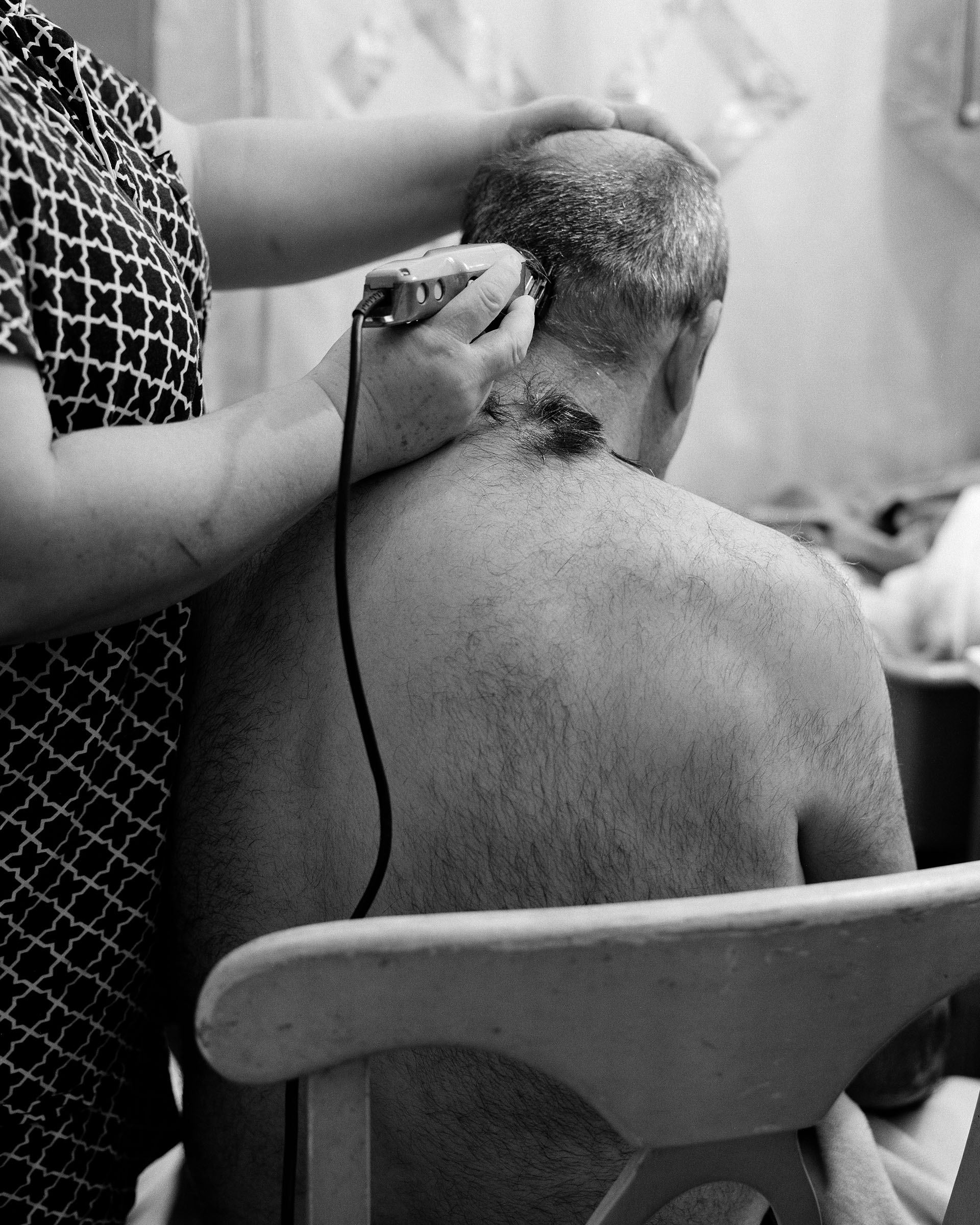
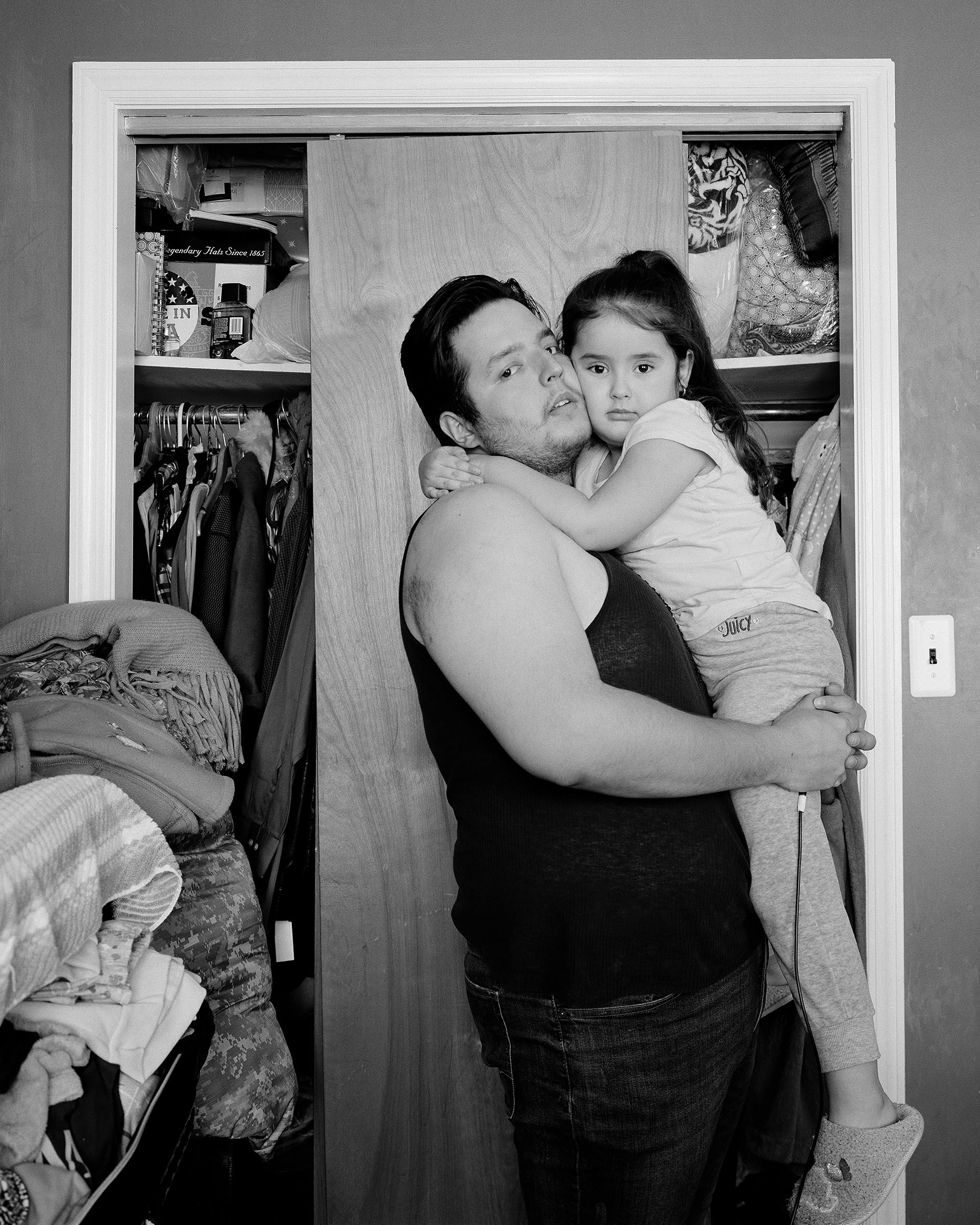
I'm blown away by your work. These are all taken on a large format film camera, 4x5, which is a whole process. It is not a handheld camera. It's not a process where you can quickly take a lot of images in a short amount of time. What is it like for you working with a 4x5 camera? How do you feel that informs the work that you're doing?
I initially started shooting 4x5 because it's a tool that slows you down and makes you think about the images you're creating. You have to question yourself, “Why am I creating this image?” It takes me anywhere from 15 to 20 minutes to create an exposure, to set everything up and adjust it. In a way, I like to think its a sneaky way that allows me to connect with my family and spend more time with them and really get to know them even more, especially when you're looking through the camera. It's also a testament to the care that goes into the work not only by the photographer but by the subject, someone that is willing to sit for that long truly cares for you and the work.
For me, it also goes back to the history of photography as I had mentioned. It's a camera that was used to colonize us and was used to create these false narratives surrounding us. I'm reclaiming the same tool to create new images, creating a new archive of images that talk about our experiences in a more adequate way.
For me, it also goes back to the history of photography as I had mentioned. It's a camera that was used to colonize us and was used to create these false narratives surrounding us. I'm reclaiming the same tool to create new images, creating a new archive of images that talk about our experiences in a more adequate way.
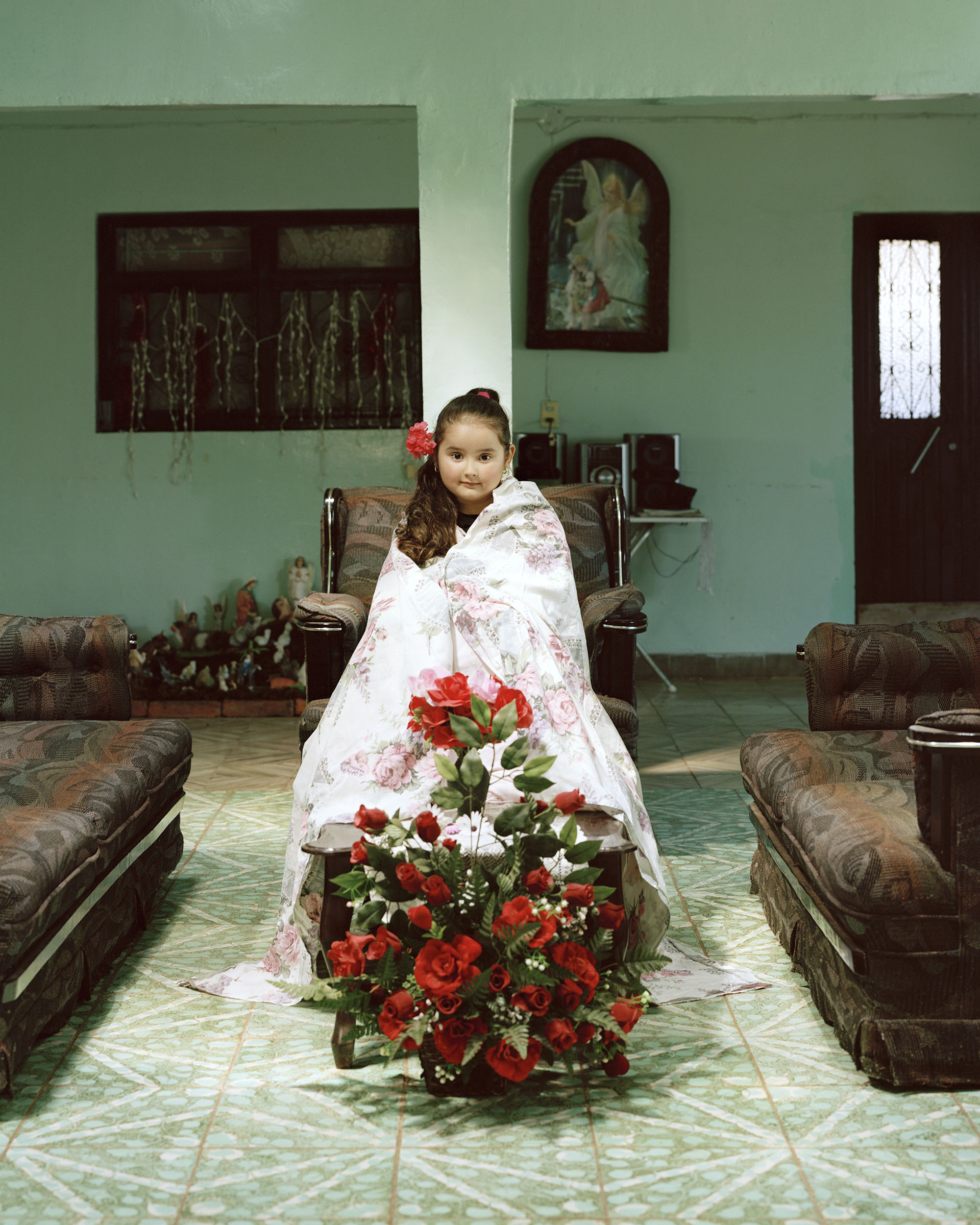

It’s a form of activism really. Reclaiming images of our family, of our culture and all while doing the medium, that for so long has oppressed us. I am excited for people to know this about your process, because it's something where if you're looking online you probably assume it's digital, right. When you're talking about your intentions behind this work for people to understand just how much work is going into this process.
Right — it just takes a lot of time and patience. For me, it's important for people to understand that there's a whole process behind making photos. There are images that I think about, and sketch out, but I still allow air to flow in between image making to create flexibility. There's also images that happen by complete accident, where everything aligns and you just press your shutter. It's also important to mention that my subjects also collaborators in the image process — specifically with my family work — because it's no longer my story, it's our family story. Between shooting we talk about visualization and how they want to be depicted or what they want the world to know about them.

Through this work, what do you want people to know about your family and about your lived experience?
I want them to know that even though I'm talking about my specific family, there's hundreds of thousands of families who are going through this — my story is just one of them. I want to invite the viewer to think about their own ideas of what immigration looks like and to challenge those ideas.
There needs to be more intersectionality when we talk about immigration, because it's not only about crossing borders, but it's also what happens when you get here. What happens to the rest of the family? There needs to be more conversations surrounding identity, trauma, care and mental health. That's something our community doesn't talk a lot about is mental health — even sexuality and all these other topics that just get swept under the rug when we talk about immigration.
There needs to be more intersectionality when we talk about immigration, because it's not only about crossing borders, but it's also what happens when you get here. What happens to the rest of the family? There needs to be more conversations surrounding identity, trauma, care and mental health. That's something our community doesn't talk a lot about is mental health — even sexuality and all these other topics that just get swept under the rug when we talk about immigration.

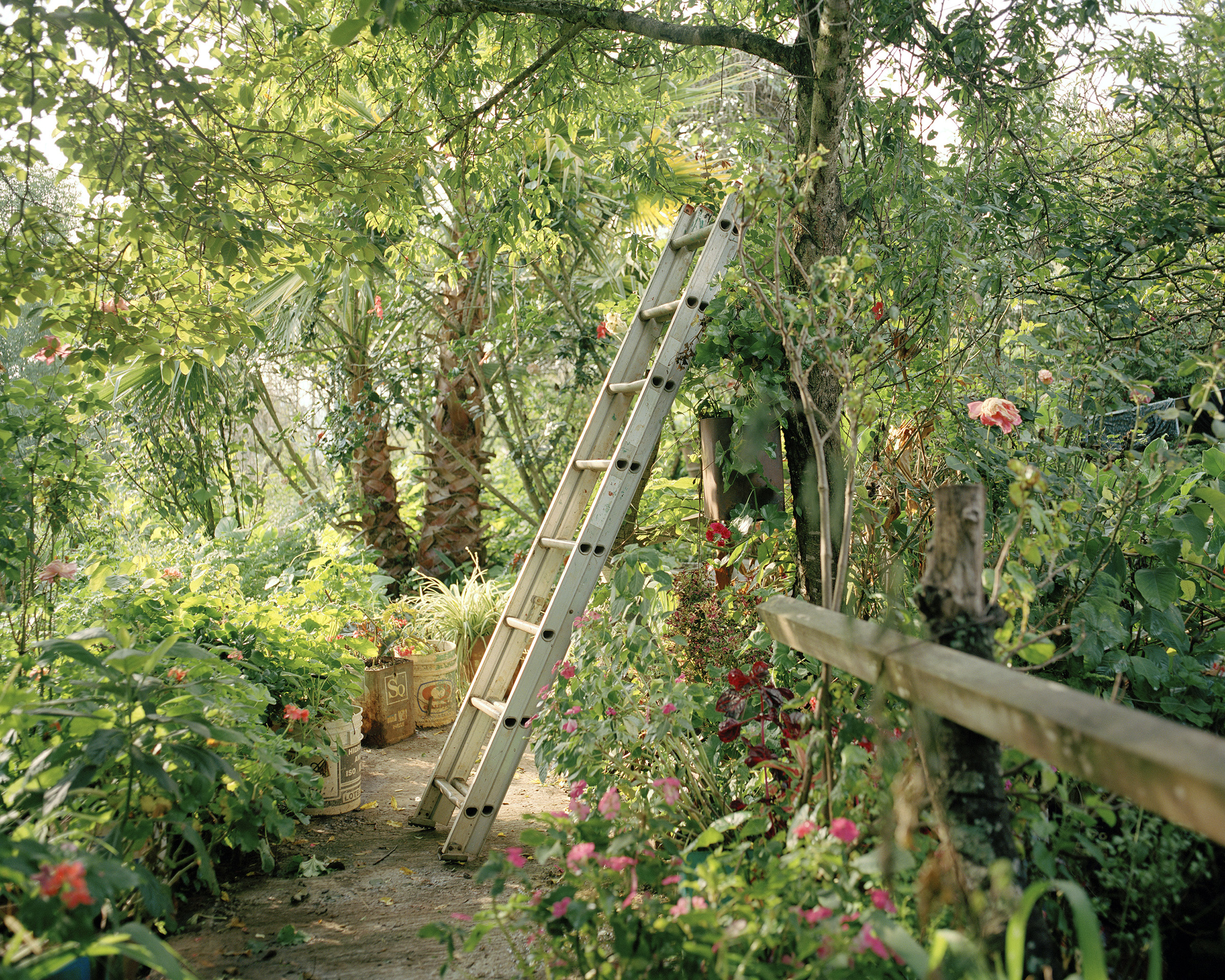
What are your hopes and dreams for the future in terms of your photography?
I want to get more people involved in my current series. I'm working on another side project where I work with more community members. I want to take it outside of my family and expand this narrative and get more stories into what it means to immigrate and talk with first generation Americans. I want to talk to kids of immigrants and what their experience is.
I would like to publish a book with my family work. Books for me in undergrad became so important because they were this physical source of knowledge that I could take. I want someone to eventually connect to my work, that they could go and spend time and look through my work — and my work becomes this widely available source for people.
I would like to publish a book with my family work. Books for me in undergrad became so important because they were this physical source of knowledge that I could take. I want someone to eventually connect to my work, that they could go and spend time and look through my work — and my work becomes this widely available source for people.
